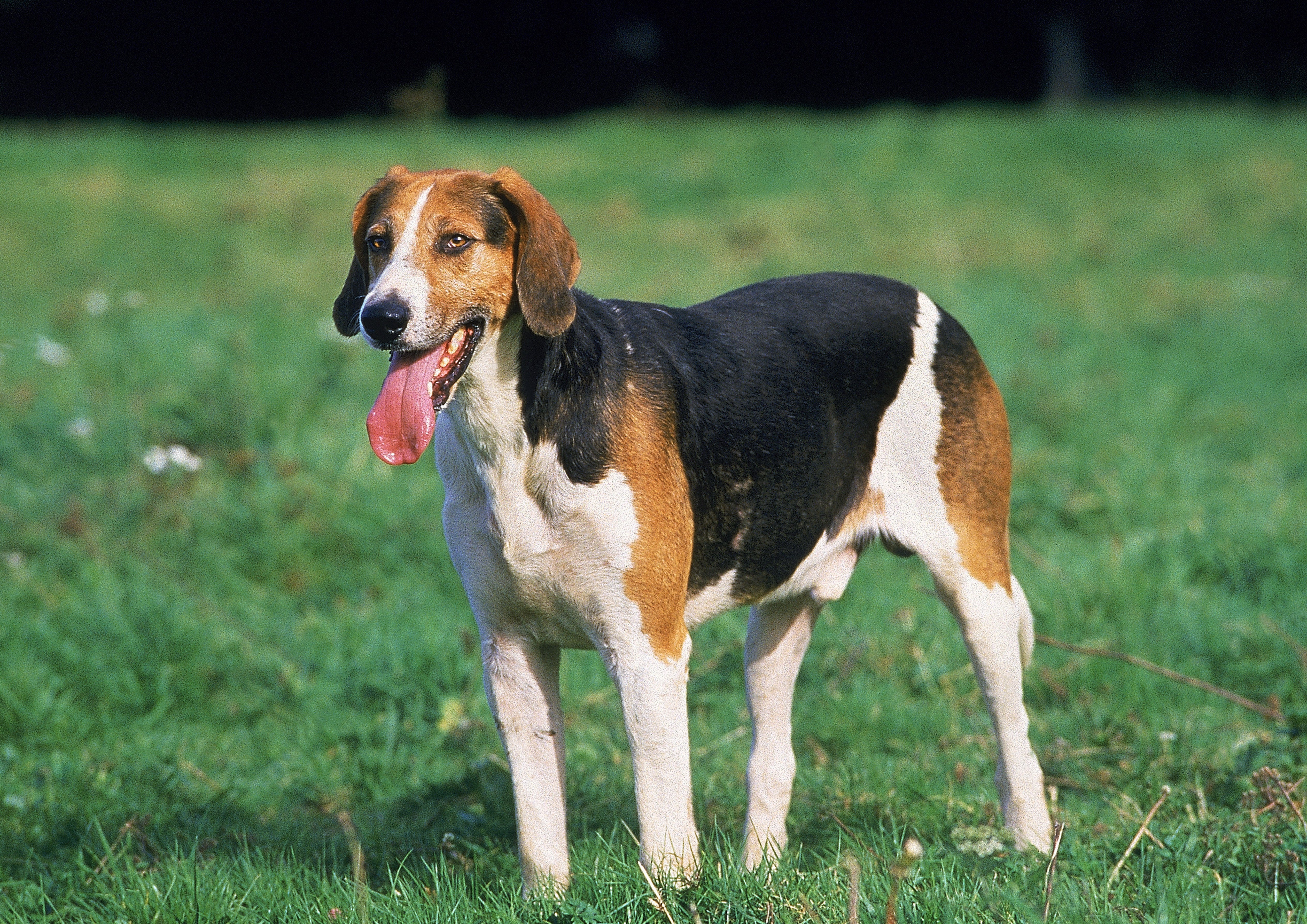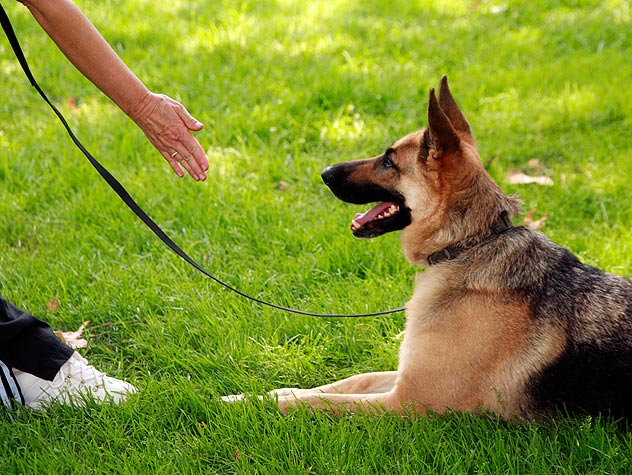English Foxhound
Full of stamina and pride, the English Foxhound is a pack hound that is driven by scent. They are gentle and sociable dogs that love to have a job to do. They get along well with others, especially other dogs, and are devoted to their families. They originated in England and evolved from fast breeds brimming with stamina such as Greyhounds, Bulldogs, and Fox Terriers.
Breed characteristics carousel
Learn More
Need to Know
- Dogs suitable for experienced owners
- Extra training required
- Generally healthy breed
- Enjoys vigorous walks
- Large and heavy-boned dog
- Requires grooming
- Chatty and vocal dog
- Barks and alerts to visitors/anything unusual
- Generally friendly with other dogs
- Good pack dog
- May need additional training to live with other pets
- Needs a large yard, preferably in rural areas
- AKC Registered Breed

Personality
Noble and driven, the English Foxhound gets along well with other dogs, pets, and people. They are generally adaptable –except when they find the scent of something they want to investigate. Then, they’re downright stubborn until they can complete their investigation. They are gentle and friendly, although not necessarily demonstrative in their affection. They bark instead of bay.
Records have been kept of the English Foxhound’s pedigree since the late 1700s, although the exact origins are unknown. Foxhunting was once a pastime of the wealthy and the dogs were tended to by Masters of Foxhounds. They were bred in packs, with each pack having the same coat colors. Now, the Foxhound enjoys the status of a family companion dog.
Owners of English Foxhounds should be outdoorsy types who love to be active. Experience with hound dogs—and the patience needed to train the sometimes stubborn dogs—is ideal. Foxhounds bray, so owners should be willing to tolerate their expressive nature and unique communication style.
Bred to work, the English Foxhound needs daily exercise, preferably outside. They love to run wild in the wide-open spaces. Once properly stimulated, they are gentle, friendly, and easygoing dogs. Leash walking will be important to master, as scenthounds can often get distracted when free running. Once they find a scent, it’s hard for them to let go of it. English Foxhounds also excel in tracking, coursing, rally, and agility.
While leash walking is preferable given their instinct to chase scents, the English Foxhound would ideally also have access to a large, fenced-in property.
The coat of the English Foxhound dog is short and dense, requiring little maintenance. Brushing it with a soft bristle brush or hound glove will help remove dirt and hair. Occasional baths can help with any unappealing outdoorsy scents the dogs might pick up. Like all hound dogs, their ears must be inspected regularly.
Independent and prone to show it, the English Foxhound might need additional training. Consistency and patience will pay off with them, as will an even-keeled approach to leadership. They need pack order established and will obey once it is. Early and ongoing socialization of English Foxhound puppies and dogs is recommended to make sure they become well-mannered companion pets.
The English Foxhound has a pack mentality so they adore being with their pack—aka, their families. They are tolerant and patient family members and do well with kids, especially older ones who can respect their boundaries. They have a lot of energy and love to play, especially with other dogs.
The cost of an English Foxhound from a breeder is significantly more than the cost of adopting one from a local shelter or rescue. The adoption fee usually covers additional items such as spaying or neutering, vaccines, and microchipping.

Learn more about feeding and caring for your English Foxhound on Purina.
Did You Know?
- The English Foxhound is broader than the American Foxhound.

